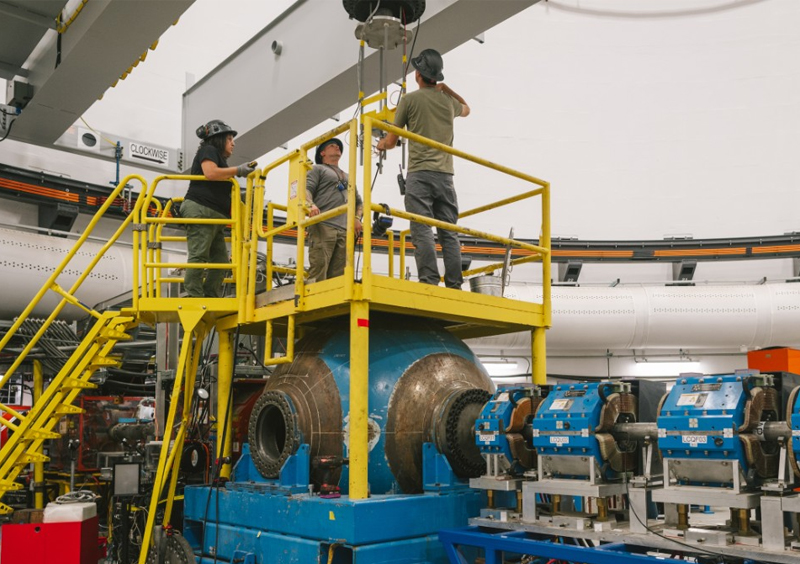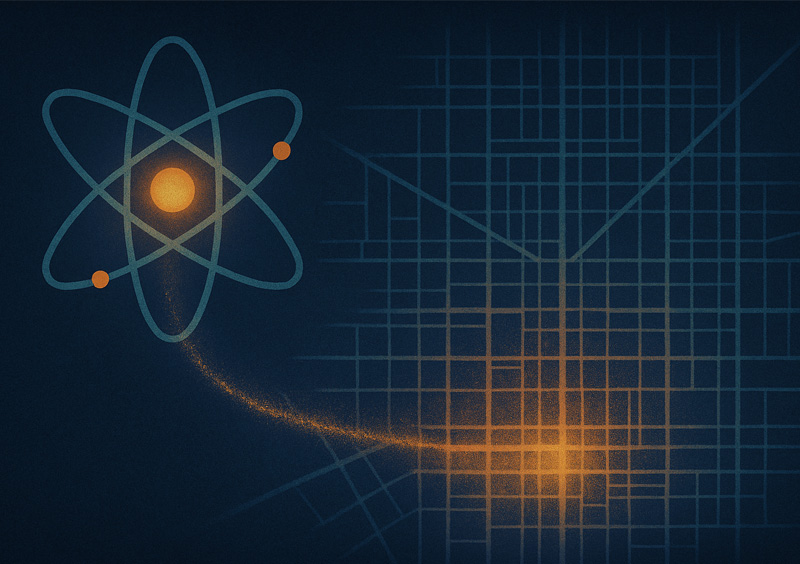“Killer electrons” that travel at nearly light speed inside Earth's Van Allen belts — the zone that surrounds the planet and traps energetic charged particles — pose a major threat to equipment in space by causing malfunctions in electronics. Now, in a collaboration between Los Alamos National Laboratory and University of North Carolina at Chapel Hill, researchers are using machine learning, an application of artificial intelligence, to improve upon a predictive model for measuring electrons inside the Earth's outer radiation belt.
“This study proves the feasibility of using the Laboratory’s particle data to predict the dynamics of killer electrons,” said Yue Chen, a Los Alamos physicist and lead author on the new research. “Meanwhile, it showcases the significance of long-term space observations in the AI age.”
The research was published recently in the journal Space Weather and is an important step forward in improving space weather forecasting capabilities and protecting satellites.
The team’s new forecasting capability, called Predictive MeV Electron – Medium Earth Orbit, or PreMevE-MEO, can provide more accurate and efficient hourly forecasts. PreMevE-MEO’s model inputs include electrons observed by 12 medium-Earth-orbit GPS satellites, and one Los Alamos geosynchronous-Earth-orbit satellite. The team developed an innovative machine-learning algorithm, combining convolutional neural networks with transformers, to improve the model.
As a result, the team showed it is possible to make high‐fidelity predictions driven by observations from longstanding space infrastructure in medium Earth orbit, the distance above the Earth at which many navigation and meteorological satellites operate. The model has potential to become a valuable space weather operational warning tool.
The new model also uses Los Alamos’ unique GPS data, which combines X-ray dosimeter particle data that was first made available to the public in 2017 and is archived by the National Oceanic and Atmospheric Administration’s National Centers for Environmental Information. One unique aspect of that data is that, unlike traditional research missions run by NASA, it is a long-term constellation with more than 100 satellite-years of data available. It is one of the few space environment resources that truly falls into the category of big data, in which modern AI approaches can be applied.
This work supports the recent Implementation Plan for the National Space Weather Strategy and Action Plan, which tasked agencies to identify and release historical data from satellites; U.S. government-funded, ground-based observatories and networks; measurements throughout the electric power grid; and magnetometer data streams that would be beneficial for improving the development, validation, and testing of models used for characterizing and forecasting space weather events.
Paper: “PreMevE-MEO: Predicting Ultra-Relativistic Electrons Using Observations From GPS Satellites.” Space Weather. DOI 10.1029/2024SW003975
Funding: This work was funded by the U.S. Department of Energy and the Laboratory Directed Research and Development program. Grant Number: 20230786ER
LA-UR-24-31809






